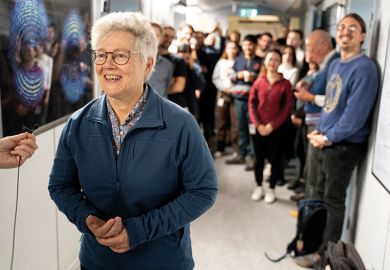A new resource aims to help students, lecturers and other scholars develop their skills and navigate the whole research process.
The new Sage Research Methods video collection, which brings together more than 125 hours of content in 484 separate videos, covers everything from planning research projects, designing surveys and collecting data to writing up the results and presenting them to others.
Developed in partnership with an international editorial advisory board of methods experts, the videos include tutorials, expert interviews, case studies and even mini-documentaries about some of the world’s leading research centres.
Gary King, Albert J. Weatherhead III university professor at Harvard University, discusses “replication in the social sciences” and explains why “articles and books are just advertisements for the research rather than the research itself”.
It is now essential, he goes on, for “the data and code that’s used in support of a published article [to] be made available to the public and to other scientists to be able to validate what they’re claiming”. Yet fortunately this is not just a matter of altruism, since “if you make your data available, you’re much more likely to be cited and to be paid attention to”.
Tyler Vigens, a third-year student at Harvard Law School, explores the strange world of “spurious correlations”.
For anyone who wants to generate one, the basic method is simple: “You take a variable that you want to correlate [and] compare it to a thousand other variables.” If you try hard enough, you’ll eventually discover an apparent correlation between, for example, the annual figures for “the coffee the average American consumed in cups” and “the Americans that are killed by misusing a hand tool” – or even “the number of people who drown by falling into a swimming pool” and “the number of films that Nicholas Cage appeared in”.
Yet correlation is not causation and the graphs that seem to demonstrate these startling links rely on “abusing [the] Y-axes” and skating over the fact that both trends are “basically straight lines”.
And statistician Andy Field, professor of child psychopathology at the University of Sussex – who has pioneered new styles of textbook, including one partly in the form of a graphic novel – has contributed “four hours of SPSS [Statistical Package for the Social Sciences] training”.
The videos in the collection are browsable by method and video type, and also by disciplines ranging from anthropology, business and criminology to social policy, social work and sociology.
Register to continue
Why register?
- Registration is free and only takes a moment
- Once registered, you can read 3 articles a month
- Sign up for our newsletter
Subscribe
Or subscribe for unlimited access to:
- Unlimited access to news, views, insights & reviews
- Digital editions
- Digital access to THE’s university and college rankings analysis
Already registered or a current subscriber? Login





